I have a PCB holding a Video decoder, FPGA and a USB controller, powered by USB3.0. Can I have two different power circuits generate power from same input and deliver to the same output?
-
Related: http://electronics.stackexchange.com/questions/62006/dc-dc-converters-in-parallel-for-double-current – MarkU Jul 14 '16 at 00:45
3 Answers
No, each power rail must be supplied by only one power supply. (Having multiple power rail voltages is common, but each power rail is supplied by a single power supply.)
The problem with attempting to drive a load with two different power supplies, is that the supply voltages will not match exactly.
Consider two power supplies that are both "nominal" 3.3V output. Suppose one supply has its setpoint regulating at 3.301V and the other has its setpoint regulating at 3.299V. If these two outputs are wired together, then the (slightly) higher voltage supply ends up doing all of the work.
Even if both supplies happened to be at exactly 3.300V under room temperautre condition, the setpoint will change with temperature variation. And once one supply begins carrying more of the load, that supply will get hotter, causing more mismatch.
The right way to approach system power supply design, is to determine the total load current needed and then design or purchase a power supply module capable of delivering the required load current.
- 14,413
- 1
- 34
- 53
Multiple power supplies can be paralled for additional current, but as MarkU says, you cannot simply parallel two circuits and expect it to work.
You need to implement some kind of current/load sharing topology to equalize the load placed in each supply. The simplest method is a series resistor: if one supply is taking more load, then there's more voltage drop and the other supply will naturally take more load. This is inefficient however, so more complicated solutions can be used: generally the feedback to the regulator is modified somehow, based on sensed current.
This TI whitepaper goes into detail about a few possible implantations.
- 383
- 1
- 2
- 8
Often there will be two sources of power for the same supply rail, e.g. one for DC coming from a wall-wart, and the second from a battery. But these will be isolated by diodes, so they don't interfere with each other.
This simple schematic assumes the wall-wart voltage and the battery are the same. The more likely case, a voltage regulator would be used to generate the same voltage from either source. Schottky diodes are usually used in these circuits to minimize the voltage drop across the diodes.
Sometimes there is a switch built into the jack that disconnects the battery when the wall-wart is plugged in. Then no diodes are needed. However this scheme fails if the user unplugs the wall-wart and expects the device to run on battery power.
This same scheme is used when a device is powered by either a USB cable or a wall-wart.
- 47,708
- 5
- 97
- 161
